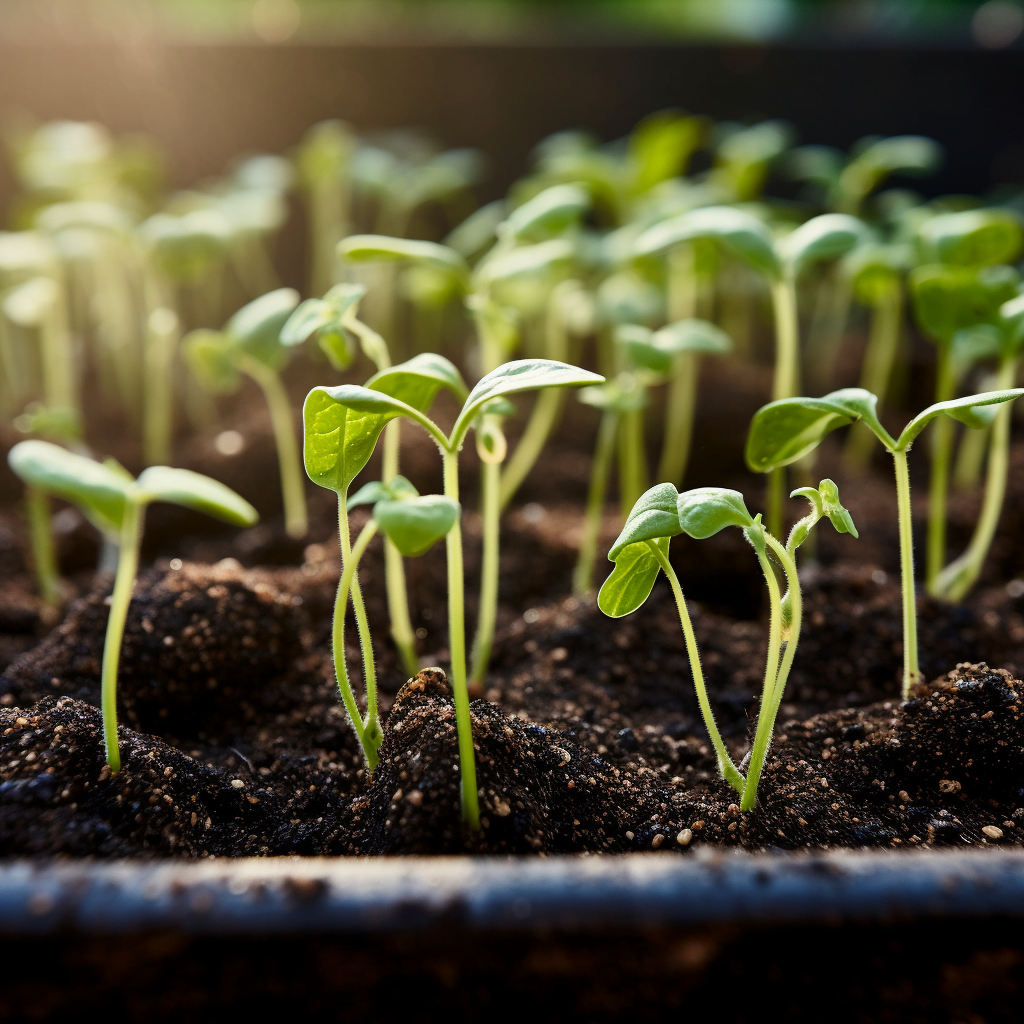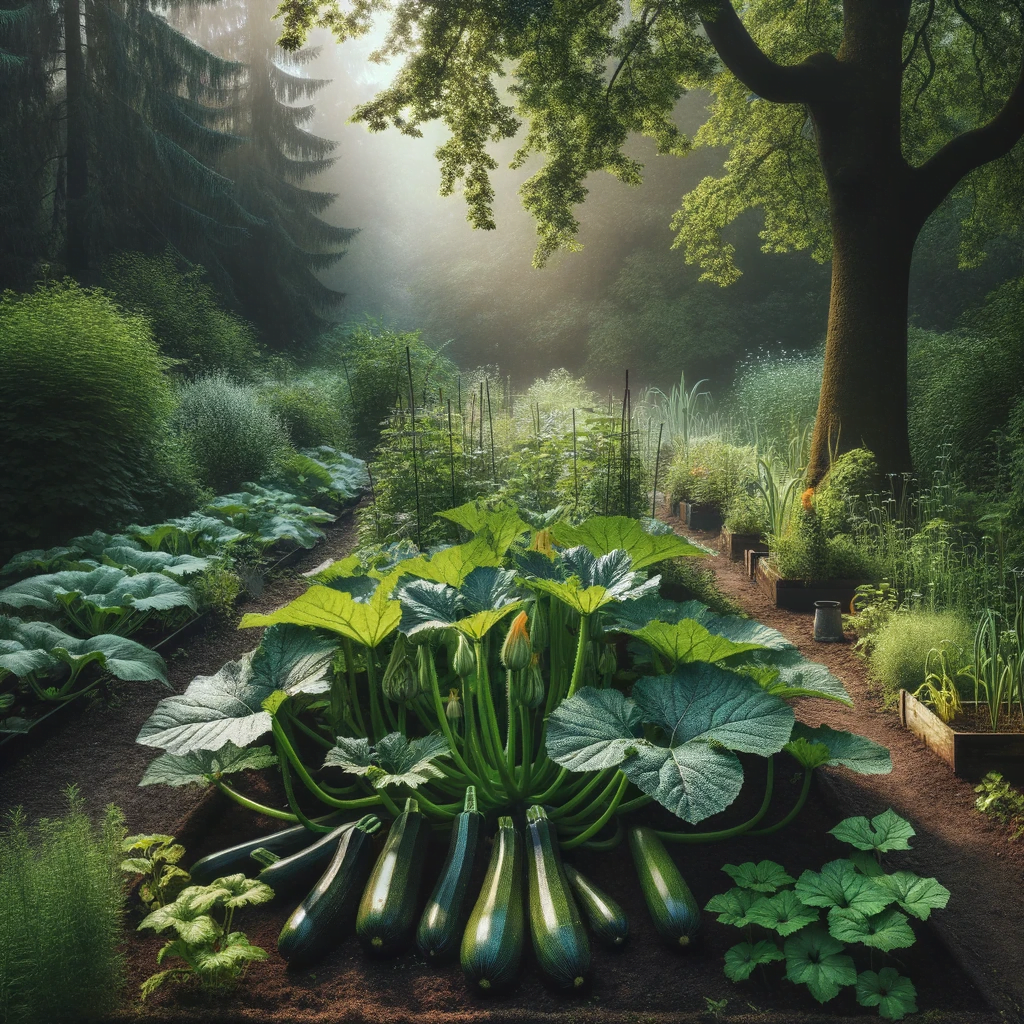Zucchini is one of the most popular vegetables for home gardeners to grow. When summer arrives, we long for mounds of green squash blossoming in our gardens. However, not every yard offers full sunlight needed for robust zucchini crops. This leaves many gardeners asking: can zucchini grow in shade?
While zucchini performs best with full sun, partial shade growing is possible through careful variety selection and some adjustments in care. Read on for an in-depth look at maximizing productivity from your precious zucchini plants, even with limited sunlight.
Zucchini Growth Requirements
Zucchini is classified as a warm season vegetable, thriving through the heat of summer. It flourishes with abundant sunshine. Most varieties require a minimum of 6-8 hours of direct sunlight daily for vigorous growth and maximum fruit production.
As a member of the cucurbit family along with cucumbers and melons, zucchini forms extensive green foliage. All these large leaves mean the plants undergo considerable photosynthesis. With insufficient sunlight, the plant invests energy in leaf development at the expense of flowering and fruiting.
While zucchini can tolerate partial or light shade, yields and fruit quality decline compared to full sun exposure. Growth in deep or complete shade results in weak, stunted plants with few fruits.
Impact of Regional Differences
Location and climate influence how much shade zucchini can withstand. In hot southern regions, the higher sunlight intensity and temperatures allow zucchini plants to tolerate more shade than cool northern locales. Late spring plantings in the north reach peak production during midsummer with the most hours of peak sunlight.
Factors Affecting Shade Tolerance
Several factors impact how well zucchini handles shade:
- Time of planting – Summer plantings allow more time to mature in abundant sun compared to unreliable spring sunshine.
- Density of shade – Light, partial shade is far easier to overcome than deep, dense shade.
- Direction of shade – Morning sun with afternoon shade works better than the reverse.
- Nearby reflective surfaces – Light reflected into the garden can supplement available sunlight. White walls, fences or aluminum sidings bounce additional light onto plants.
- Garden structures – Pergolas, arbors and trellises placed to maximize sun exposure help mitigate shade.
Strategies for Growing Zucchini in Shade
While zucchini performs best in wide open sunny spaces, there are strategies to improve success when dealing with shade:
- Select shade-tolerant varieties – Some zucchini cultivars are optimized for shade tolerance through breeding. ‘Partenon’ and ‘Noche’ are two good ones to try.
- Plant at sunniest edge – Situate plants on the sunniest side of a location that transitions to shade.
- Use reflective mulches – Aluminum or white plastic mulch bounces light back up into the plant canopy. Black or red plastic warms the soil.
- Prune foliage – Strategically remove leaves or branches that heavily shade your zucchini plants.
- Use movable containers – Grow zucchini in pots or planters than shift to follow the arc of sunlight.
- Install supports – Trellises and cages minimize sprawling plants that can shade each other.
- Remove shade – Carefully trim back encroaching tree branches or vegetation that blocks sun.
With some effort, it’s possible to maximize the sunlight that does reach your zucchini, even in adverse conditions.
Optimizing Care for Zucchini in Shade
Zucchini plants growing with shade limitations need some specialized care for best results:
- Water frequently – Shaded plants lose less moisture through transpiration but require irrigation to replace heat energy from the sun.
- Use warming mulches – Black or red plastic mulch absorbs and retains heat in the soil environment.
- Apply nitrogen fertilizer – Extra nitrogen fosters lush foliage growth despite lower light conditions.
- Prune aggressively – Thin crowded leaves for better air circulation and light penetration.
- Control pests/diseases – Plants stressed by shade are more susceptible to fungal issues, mildew and pests. Stay vigilant.
- Weed thoroughly – Eliminate competing weeds that further restricting sunlight and nutrients.
- Reduce fruit loads – Limiting fruit production through pruning allows plants to focus energy.
With extra care, it’s possible to offset the disadvantages of shade for zucchini. But yields will lag behind plants growing under optimal full sun conditions.

Best Companion Plants for Partially Shaded Zucchini
Some vegetable plants and herbs make good companions around zucchini in partial shade:
- Leafy greens – Lettuce, spinach, arugula, kale can underplant zucchini.
- Root crops – Radishes, beets, carrots, onions will tolerate some shade.
- Cucumbers – Cucumbers have similar needs and appreciate filtered light.
- Herbs – Dill, cilantro, parsley offer flavor complements.
Interplanting compatible plants allows maximum productivity in space-constrained shady gardens. But balancing the water, nutrition and light needs can prove challenging with multiple plantings.
Creative Solutions for More Sunlight
Don’t give up on shade-impacted zucchini plants too quickly. Here are some creative strategies to optimize available sunlight:
- Use fan trellises that spread plants out while capturing more low-angle morning/afternoon light.
- Employ espalier training techniques to maximize sun exposure on available vertical surfaces.
- Plant zucchini in lightweight grow bags that shift easily to sunnier spots.
- Construct simple A-frame supports to lift and angle plants towards sunlight.
- Reflect additional light into the garden using moveable white boards or suspended aluminum baking sheets.
- Weave plants in and out of partial shade from tall crops like corn and tomatoes.
With some garden engineering ingenuity, it surprising how much marginal light zucchini plants can utilize.
Deciding When to Abandon Shaded Zucchini
Gardeners pouring time and effort into nurturing shade-stressed zucchini eventually face the question: when do you give up? Watch for these warning signs:
- Missing or declining flowers with no fruit production.
- Extremely slow vegetative growth and lack of plant vigor.
- Significant pest insect or disease damage enabled by damp conditions.
- Deformed misshapen fruits formed under insufficient sunlight.
There comes a point when continually struggling zucchini simply will not rebound despite your best efforts. Learn to recognize when it makes sense to pull plants and redeploy the space for better results.
Key Takeaways on Growing Zucchini in Shade
- Full sun locations remain the ideal for robust zucchini growth and productivity. But partial shade may work through proper variety selection and care practices.
- Focus on improving sunlight exposure through reflective materials, pruning back shading foliage, and creative supports or trellising.
- Monitor zucchini plant health closely. Quickly remove plants that fail to thrive with inadequate sunlight.
- Companion plant compatible vegetables and herbs that tolerate partial shade around zucchini plants.
- Implement vertical gardening techniques that capture more low light from the sides.
Gardeners lacking full sun should not despair. With realistic expectations and attentive care, it is possible to coax moderate yields from zucchini, even in shade. When the outcome remains uncertain, stay flexible and don’t hesitate to adjust your approach. With persistence and sunlight optimization, homegrown zucchini can brighten any shadier garden.



